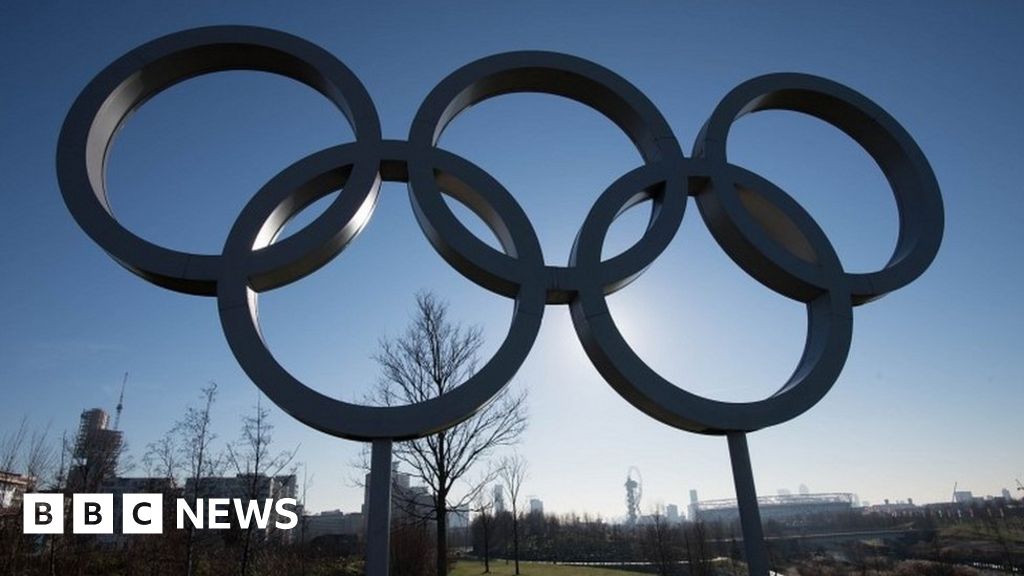
Did hosting the Games change sport in the capital?
[ad_1]
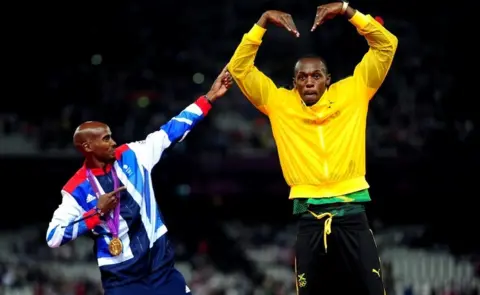 PA Media
PA MediaWhen in 2005 the UK won the right to host the 2012 Olympics and Paralympics in London, the bid was as much based on the impact of holding the Games as upon the event itself.
Numerous legacy promises were made but key among those was increasing the number of people playing sport and turning the UK into “a world-leading sporting nation”, highlighted by 2012’s motto, “Inspire a Generation”.
In the run-up to the Games, the government heralded “our best chance in a generation to encourage people to be more physically active”, and in 2008 set a target to have at least two million more people in England being more active by 2012.
That target disappeared from later legacy documents but the ambition to increase participation in sport across the country remained.
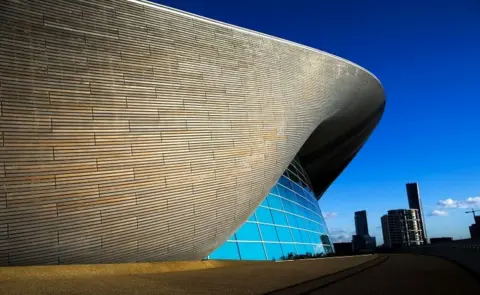 PA Media
PA MediaIndeed, the proportion of the population taking part in sport has even decreased in recent times.
Statistics from Sport England show that over the past five years the percentage of people classed as active (with activity levels of at least 150 minutes a week) has fallen, while the number classed as inactive (activity levels of less than 30 minutes a week) increased.
The pandemic has clearly affected the number of people participating in sport in recent years. Yet while the amount being active has begun to rise again, the most recent survey showed it was still lower than pre-pandemic levels even when lockdown restrictions had been removed.
This trend was the same in London, with Sport England describing the situation across the country as “concerning”.
It was initially a better story when looking at the number of disabled people participating in sports.
Since then, Sport England data shows the number of disabled people classified as being active has remained relatively steady.
However, the numbers taking part in activities has remained significantly below that of those without disabilities, and disabled adults have been found to be almost twice as likely as non-disabled people to be physically inactive. Furthermore, according to charity Activity Alliance 77% of disabled people would like to be more active.
A more obvious place where a legacy can be found is in elite sports at later Olympics and Paralympics Games, where huge investments were also made.
Team GB improved their medal haul at Rio 2016, making them the first country in history to increase their tally following a home games.
ParalympicsGB has also had continued success, at Tokyo 2020 reaching the podium in more sports than any other nation at a single games.
Yet such success has not been without controversy.
In recent years, allegations of bullying and abuse emerged in some sports, such as cycling and gymnastics, with some suggesting UK Sport’s “no compromise” pursuit of medals in its funding approach being partly to blame.
Those involved in some Olympic events have also questioned whether such methods, which led to funding being cut or withdrawn from sports where medals were considered unlikely, meant they missed out on the chance to grow and develop participation in them.
For example, the London Olympics was the only time that Britain entered a squad for women’s water polo. The team ended the Games in 8th place and the following year UK Sport ended its financial support.
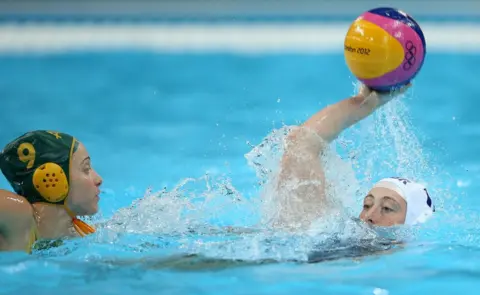 Getty Images
Getty ImagesPeggy Etiebet, assistant coach for Britain’s women’s water polo team, believes had some funding remained “we could have done so much more”, as “we started it out and it just kind of withered away unfortunately”.
“The OIympics is great but what we’re looking at is getting girls in the water and girls exercising, and that is a dream that drags up girls’ sports at grass roots level,” she said.
Water polo has been one of those to gain from the move, receiving £375,000 over the next four years as part of the National Squads Support Fund, although players still have to raise their own money to train and compete.
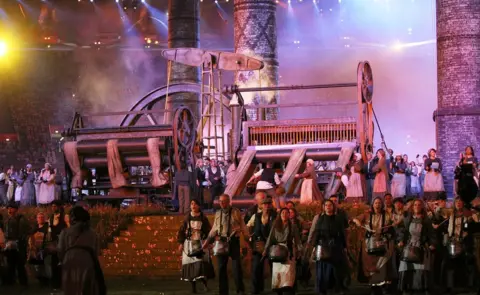 Getty Images
Getty ImagesA more concrete legacy of the Olympics and Paralympics was the appearance of brand new sports facilities in east London, like the Lee Valley Velopark and the London Aquatics Centre.
These were created for elite stars to perform at their pinnacle but are subsidised so they are now affordable for the local community, as was promised.
At the heart of the Queen Elizabeth Olympic Park is the athletics stadium, now called the London Stadium, which became the base for so many memories from the Games, from Danny Boyle’s joyful Olympics opening ceremony to the golden success of Super Saturday.
The bid document initially promised that following the event the London Stadium would be converted into a 25,000-seat multi-purpose venue “with athletics at its core”.
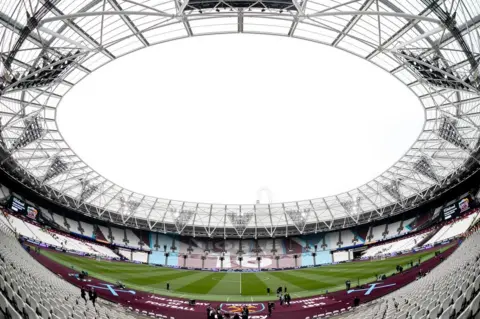 Getty Images
Getty ImagesHowever, it was later decided to reconfigure it, at a large cost to the taxpayer, into a multi-use venue centred around football in order to keep it viable as a stadium, unlike what had happened with some facilities in other Olympic and Paralympic cities.
West Ham United controversially moved in in 2016, paying a rent described as “ludicrously generous” by some, and while events like concerts and a monster truck jam have recently featured at the arena, track events have been a rare sight in Stratford in recent years.
In 2020, the Anniversary Games was cancelled as a result of the pandemic, while the 2021 edition was moved to Gateshead due in part to the £3m reconfiguration costs of turning the stadium into an athletics facility.
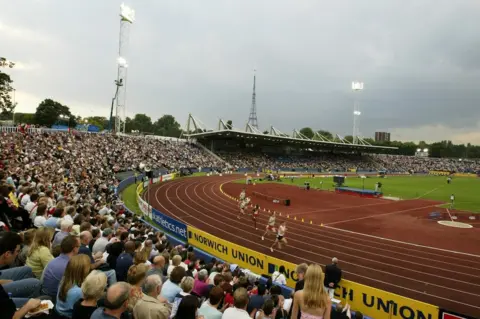 Getty Images
Getty ImagesThis is despite the fact that the former home of British athletics continues to rot in south London; prior to the Games, much was made of the fact that Crystal Palace’s standing as a sports arena would not be affected by athletics’ move north of the Thames to Stratford.
But the Crystal Palace National Sports Centre (NSC) has been closed since March 2020, while the crumbling stands of the famous stadium that once hosted the likes of Usain Bolt remain in need of repair.
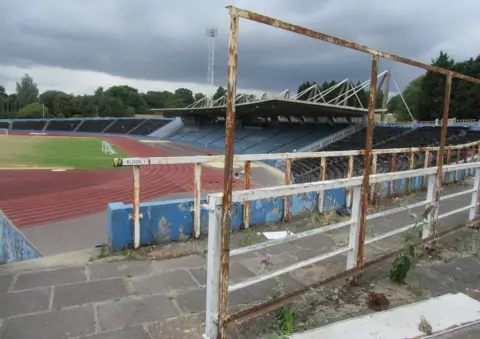
Earlier this year John Powell, chair of the Crystal Palace Sports Partnership, said “it would be a significant embarrassment if London was left without a stadium”.
“There’s probably more athletics talent coming out of London than anywhere else in the country.
“You’ve got the foundations there, it just needs investment and the will to make it work. Currently, we are seeing the decline of one of the most iconic sports venues in Europe,” he said.
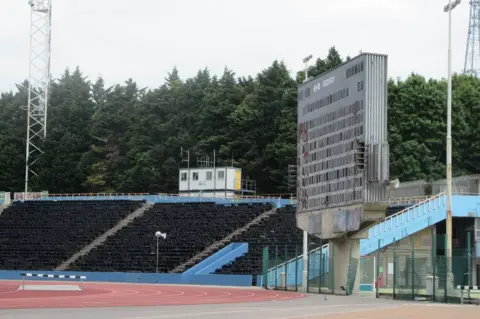
Still, the questions swirling around the future of an athletics stadium do not seem to worry Mr Khan, who last week revealed his office was “working on a plan” to bring the Olympics and Paralympics back to London as early as 2036, according to the Local Democracy Reporting Service.
For him, the sporting facilities created for 2012 would be key to any new bid.
“What we’re doing, actually, is working on a plan to have the greenest Games ever, because the great thing about London is you don’t need to expend carbon in building new stadiums, new places to cycling, new places to do swimming, because we’ve got all the kit.”
So could the Olympic and Paralympic flame burn again in the capital?
“Watch this space,” he said.
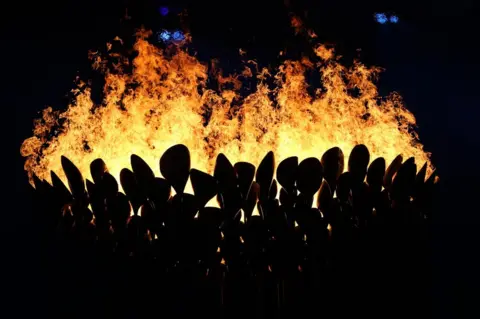 Getty Images
Getty Images
[ad_2]
Source link





